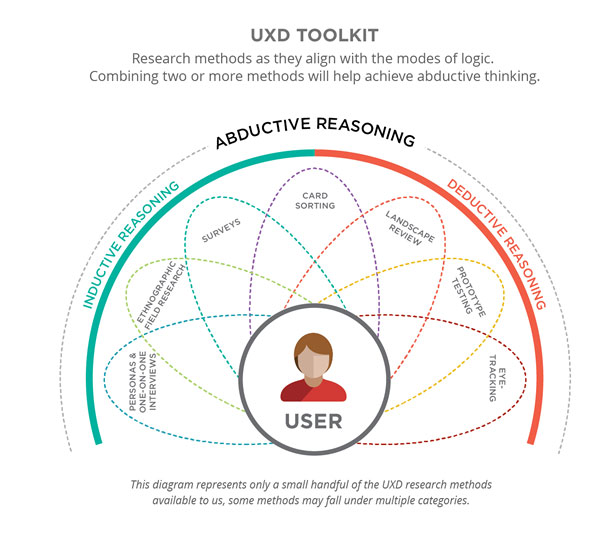Last week I had the good fortune to attend an unconference session run by Chris Satchell. He’s ex-CTO of Nike. He understands customers. Now as Chief Product Officer over at Comcast, he led with this thought provoking one-liner:
Your brand is your customer journey.
Think about that for moment.
We’ve all heard that your brand is not what you say it is but how others perceive it. Brand perception boils down to how your customers engage with you. The journeys you take them on. It’s the sum total of all customer experiences – for better, for worse – across all touchpoints. Your brand is your customer journey, but they must been connected.

The challenge lies in mapping out these interconnected customer journeys. They are hard to create in the first place and really difficult to sustain ongoing success. Continuously changing over time, connected customer journeys require so many people across the business to collaborate. But that is exactly what success looks like for those companies building superior brands. The ability to design and deliver connected customer journeys is a critical component of competitive advantage in digital today. No longer an optional, connected customer journeys are the new norm.
Why so hard?
The world we live in is frigging complicated. It’s fuzzy not sharp. Nothing is black and white, we operate in shades of grey. There are no absolutes, so get comfortable with being relative. And better questions, require better answers that invariably start with; it depends.
Customer journeys start out as educated guesses about how we think you would like to engage with us. We then sharpen up those journeys up over time, testing and learning from those experiences as we go. Digital really helps here by enabling the constant collection and unpacking of data into insights. These insights lead to ideas that we can prioritise as a business. Only then can we select the right idea, execute it and hopefully it delivers business impact that we anticipated. Rinse and repeat.
However, there is a difference between a customer journey designed for people and those that are not. You and I can feel when company has executed poorly on their customer journey. They are not thinking hard enough about how we as people make sense of world. About how we reason. It’s important. Let me explain the difference between deduction and abduction reasoning to help shed some light on this.
Deductive vs Abductive Reasoning
Big words, simple ideas. Bare with me here.
Deductive reasoning basically works on the truth of the assumptions. If all batchelors are male and men over 40 are clueless, then you can pretty much guarantee that a 45 year old batechlor is a clueless man. It’s all about the assumptions. Customer journeys built up rigid assumptions are inflexible. Deductive reasoning assumes you’ve already arrived at the solution. You’re in tweak mode. Approaching the end of your learning journey.
Abductive reasoning is how we orient ourselves in the world given the many possible explanations that we have to deal with day to day. Say you’re in a crowded bar talking to your friend and turn round a place your drink on the bar and continue your conversation. You hear a smash and people clapping. You turn round and your drink is in a thousand pieces on the bar floor. Despite the many possible explanations (you inadverently elbowed it, the barman fumbled it, the person next to you knocked it, a freak gust of wind glew it off, and so on, we tend to abduce a single explanation to make sense of the world around us. This is how people work. In the grey. Open to new ideas. A solution is out there and we are actively looking for it.
Now when designing and delivering customer journeys we have continually build hypotheses that explain observations in customer behaviour, in real-time. To learn and optimise continuously. To navigate all the adjacent possible explanations for that customer journey. Companies approaching customer journeys using deductive reasoning are struggling. Sometimes, it’s because the HiPPO is putting the assumptions out there. Maybe there is a lack of insights. Or your company cannot act on the insights in a proactive manner. Either way, it’s stupid, lazy and uncompetitive to design and deliver connected customer journeys in this way.

Companies approaching customer journeys that take on board abductive reasoning are setting themselves up for success. It’s hard, yes, but the returns are there. User Experience Design folks are already moving in this direction, but we need to accelerate. Designing and delivering of connected customer journeys is a journey of exploration in itself.
Where to start?
I’m not going to show you how to connected customer journeys (yet!). A google search will give you all that wonderful juice and some. Instead, when designing and delivering your connected customer journeys, think broadly and incorporate ACT:
- Audience; start with who and focus on the few.
- Content; design your content to be accessible and consistent, everywhere.
- Technology; enable content-driven experiences only where they make sense.
This is most definitely a left-to-right plan, not right-to-left. Start with audiences. The connected customer journey is an gigantic exercise in connecting the silos. It is frought with problems that require serious attention to organisational design to be paid up in full. But these connected customer journeys are gold dust today. They are the digital currency that drive innovation and growth across the business. So just do it.

